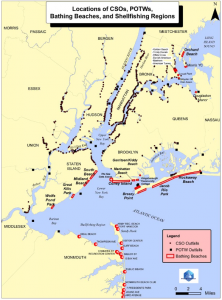“Each year, the County’s Division of Planning hosts the AmeriCorps Watershed Ambassador who serves the WMA 12 Monmouth watershed region. The program is administered by the NJ Department of Environmental Protection’s Division of Water Monitoring & Standards, with 20 ambassadors serving across the state. The program promotes watershed stewardship through education, community involvement, and biological and visual stream health monitoring. During their year of service, Watershed Ambassadors engage with community volunteers and offer presentations to expand awareness and encourage local action.
This year’s WMA 12 Watershed Ambassador is Amber Mallm, a resident of Freehold who studied Environmental Policy, Institutions and Behavior with a Minor in Sustainability at Rutgers. She is passionate about improving our connections to nature and has experience in environmental education and outreach programs. Amber is available for educational outreach initiatives for schools, scouts and other community groups. She is also available to assist with local projects, and will be seeking volunteers to aid in stream monitoring, watershed clean-ups and native plantings. Contact Amber at Amber.Mallm@co.monmouth.nj.us in regards to any outreach or volunteer opportunities.”
Source: Monmouth County Environmental and Sustainability Planning Newsletter, 5 October 2017


